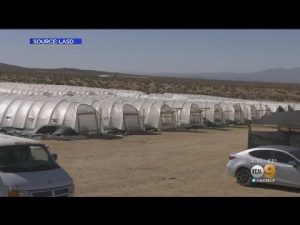Congressman Say Illegal Antelope Valley Pot Grows Being Run By International Drug Cartels .In recent years, the Antelope Valley region has been grappling with a clandestine operation that threatens not only local communities but also national security.

Illegal antelope valley pot grows are not just the work of small-time operators but are intricately linked to international drug cartels. The complexities of this issue extend far beyond what meets the eye, and it’s imperative to delve deeper into the matter to understand the full scope of its implications.
You Might Also Like Indoor Garden System with LED Grow Lights
The Rise of Illegal Pot Grows in Antelope Valley
Antelope Valley, known for its vast landscapes and agricultural potential, has unfortunately become a hotspot for illicit marijuana cultivation. The allure of the region’s remote areas and favorable climate has drawn in criminal elements seeking to exploit these conditions for their gain. Illegal pot grows not only pose significant environmental hazards due to the unregulated use of pesticides and water diversion but also contribute to a surge in criminal activities.
Understanding the Involvement of International Drug Cartels
While some may perceive illegal pot grows as isolated incidents, the reality is far more sinister. These operations are often orchestrated by international drug cartels with vast resources and sophisticated networks. These cartels capitalize on the lucrative marijuana market, using Antelope Valley as a base for their operations. Their involvement extends beyond mere cultivation; it encompasses distribution networks that span across borders, making it a transnational issue that requires urgent attention.
Implications for Local Communities and Law Enforcement
The proliferation of illegal antelope valley pot grows has far-reaching consequences for local communities and law enforcement agencies. Not only do these operations undermine legitimate businesses in the region, but they also fuel violence and crime. Law enforcement agencies are faced with the daunting task of dismantling these operations while grappling with limited resources and manpower. Moreover, the presence of international drug cartels complicates matters, as they operate with a level of sophistication that challenges traditional enforcement methods.
Environmental Degradation and Ecological Impact
Beyond the immediate socio-economic ramifications, illegal pot grows in Antelope Valley pose a significant threat to the environment. The unregulated use of pesticides and chemicals contaminates soil and water sources, endangering local ecosystems and wildlife.

Moreover, the diversion of water for cultivation purposes exacerbates drought conditions, further straining an already fragile ecosystem. Addressing these environmental concerns is paramount to safeguarding the long-term sustainability of the region.
Collaborative Efforts for Mitigation and Enforcement
Addressing the issue of illegal antelope valley pot grows requires a multi-faceted approach that involves collaboration between various stakeholders. Law enforcement agencies must coordinate efforts at the local, state, and federal levels to disrupt international drug cartels‘ operations effectively. Additionally, community engagement and public awareness campaigns are vital in mobilizing support and fostering a sense of collective responsibility.
Congressman Say Illegal Antelope Valley Pot Grows Being Run By International Drug Cartels FAQs
What is the issue with illegal pot grows in Antelope Valley?
The issue involves the discovery of illegal marijuana cultivation sites in the Antelope Valley region, allegedly being operated by international drug cartels.
Who discovered these illegal pot grows?
Law enforcement agencies, including local police and federal authorities, have been involved in discovering and addressing these illegal operations.
How widespread is the problem?
The problem seems to be significant enough to garner attention from various law enforcement agencies and public officials, indicating a notable presence of illegal cultivation activities.
What evidence suggests the involvement of international drug cartels?
Official statements from law enforcement agencies often cite evidence such as sophisticated cultivation techniques, large-scale operations, and connections to broader criminal networks as indicators of cartel involvement.
What are the potential consequences of these illegal activities?
The consequences can range from environmental damage due to pesticide use and water diversion to public safety concerns stemming from the presence of criminal organizations in local communities.
How are authorities responding to this issue?
Law enforcement agencies are actively investigating and raiding illegal cultivation sites, seizing plants and arresting individuals involved in these operations.
What measures are being taken to prevent future occurrences?
Efforts may include increased surveillance, community engagement to report suspicious activities, and legislative measures to strengthen penalties for those involved in illegal cultivation.
How does this impact the local community?
The presence of illegal cultivation sites can lead to various negative impacts on the local community, including decreased property values, increased crime rates, and environmental degradation.
Are there any efforts to legalize marijuana cultivation in the area?
Legalization efforts may be ongoing, but the focus remains on addressing illegal activities and ensuring compliance with existing laws and regulations.
What can residents do if they suspect illegal cultivation activities in their area?
Residents are encouraged to report any suspicious activities to local law enforcement or relevant authorities, as their cooperation is essential in combating illegal cultivation operations and ensuring community safety.
Conclusion: Taking Action Against Illegal Antelope Valley Pot Grows
In conclusion, the prevalence of illegal pot grows in Antelope Valley represents a complex challenge that necessitates decisive action.
By understanding the involvement of international drug cartels and the far-reaching implications for local communities and the environment, we can begin to develop effective strategies for mitigation and enforcement. Through collaborative efforts and a commitment to upholding the rule of law, we can work towards eradicating this threat and safeguarding the well-being of our communities.


